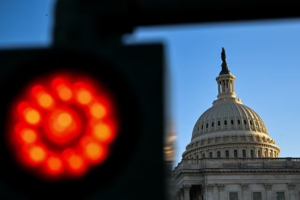The recent announcement from the Trump administration imposing a substantial $100,000 fee on new H-1B visas has sent shockwaves through the very industry that once heavily backed his campaign: the American technology sector. While the headlines capture the outrage, the true story lies in the strategic implications—a move that threatens to undermine America’s long-standing competitive advantage in the global war for talent.
As a policy analyst focusing on tech industry dynamics, I see this not merely as a new cost but as a fundamental shift that exposes a deep rift between the administration’s “America First” ideology and the economic realities of innovation.

The Policy in Practice: A Tax on Innovation, Not Just Visas
The initial, chaotic rollout—announced late on a Friday with ambiguous details—created immediate panic. Reports emerged of workers disembarking from flights and companies scrambling to recall employees, fearing the fees would apply to existing visa holders abroad. While the White House later clarified the fee is a one-time charge for new visas, the damage to the perception of U.S. stability was done.
The core of the tech industry’s objection is not just the staggering cost itself. It’s that this fee acts as a disproportionate tax on growth and innovation. For a startup aiming to bring in a crucial AI researcher or a seasoned software architect, an unexpected $100,000 fee is not a line item; it’s a existential threat. This policy effectively privileges well-funded tech giants over the agile startups that drive breakthrough innovation.
The Stark Contrast: Tech Leaders Break Their Silence
The reaction from tech leaders has been notably vocal, highlighting the severity of the threat.
- Esther Crawford, Director of Product Management at Meta: “America’s edge has always been that we attract smart, ambitious people from everywhere… High-skilled immigrants don’t take from us, they build with us.” This sentiment reflects the industry’s foundational belief that talent is global and must be harnessed.
- Andrew Ng, Founder of DeepLearning.AI: “America should be working to attract more skilled talent, not create uncertainty that turns them away.” Ng points to the long-term risk: when top graduates from U.S. universities can no longer secure visas, they take their skills to competitors like Canada, Australia, or their home countries, creating a “brain drain.”
However, the support from figures like IBM’s Gary Cohn and Netflix’s Reed Hastings reveals a strategic divide. They argue the high cost will reserve visas for “very high value jobs.” This perspective suggests a willingness among some established players to absorb the cost if it simplifies the process for a smaller number of elite hires, potentially even reducing competition for talent.
The Bigger Picture: A Weakened Hand in a Global Game
This policy cannot be viewed in isolation. It comes amid other immigration crackdowns, such as ICE raids on factories, and the lingering economic effects of previous trade policies. As economists at Berenberg warned, the cumulative effect weakens the U.S. labor market.
The greatest risk is the signal it sends to the world. For decades, the U.S. has been the undisputed destination for the world’s brightest minds. By creating financial and bureaucratic barriers, we are actively ceding this advantage. Competitor nations with more welcoming immigration policies are poised to benefit immensely, attracting the entrepreneurs and engineers who will build the next Google or Tesla—elsewhere.
Analysis: Short-Term Gain for Long-Term Pain?
The administration may frame this as a win for American workers and a new revenue stream. However, this analysis is shortsighted.
- Stifling Startups: The policy structurally advantages large corporations over small businesses, stifling the competitive dynamism of the U.S. economy.
- Erosion of Talent Pipeline: The uncertainty discourages international students from enrolling in U.S. universities, cutting off a critical future talent pipeline.
- Global Perception: The message of instability makes the U.S. a less attractive partner for global business and investment.
Strategic Implications for the Tech Industry
The tech sector’s contribution to Trump’s campaign was an investment in a predictable, pro-business environment. This move is perceived as a betrayal of that understanding. The industry now faces a critical choice: absorb the costs and navigate the chaos, or intensify its lobbying efforts and publicly challenge a policy it sees as fundamentally damaging to its future—and by extension, to the U.S. economy.
In conclusion, the $100,000 visa fee is more than a policy change; it’s a stress test for the relationship between the U.S. government and its most innovative sector. The outcome will determine whether America continues to lead the global technology revolution or voluntarily surrenders its crown.




